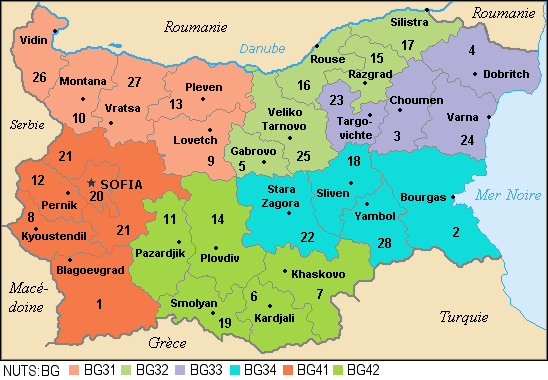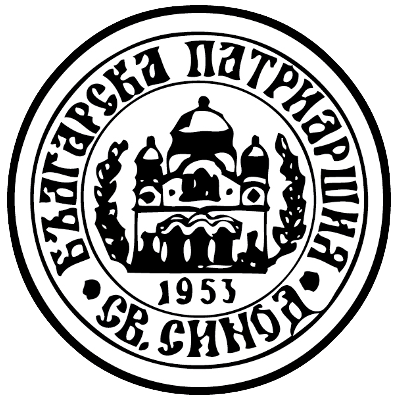|
Suhindol Municipality
Suhindol Municipality ( bg, Община Сухиндол) is a small municipality (''obshtina'') in Veliko Tarnovo Province, central-north Bulgaria, located in the transition between the Danubian Plain (Bulgaria), Danubian Plain and the area of the so-called Fore-Balkan. It is named after its administrative centre – the town of Suhindol. The municipality embraces a territory of with a population of 3,046, as of December 2009. The Hemus motorway is planned to cross the area connecting the capital city of Sofia with the port of Varna, Bulgaria, Varna on the Bulgarian Black Sea Coast. Settlements Suhindol Municipality includes the following 6 places (towns are shown in bold): Demography The following table shows the change of the population during the last four decades. Vital statistics The municipality of Suhindol has a low birth rate combined with a very high death rate, which makes the natural growth negative. Religion According to the la ... [...More Info...] [...Related Items...] OR: [Wikipedia] [Google] [Baidu] |
Provinces Of Bulgaria
The provinces of Bulgaria ( bg, области на България, oblasti na Bǎlgarija) are the first-level administrative subdivisions of the country. Since 1999, Bulgaria has been divided into 28 provinces ( bg, области, links=no – ''oblasti;'' singular: – ''oblast''; also translated as "regions") which correspond approximately to the 28 districts (in bg, links=no, окръг – ''okrug, okrǎg'', plural: – ''okrǎzi''), that existed before 1987. The provinces are further subdivided into 265 municipalities (singular: – ''obshtina'', plural: – ''obshtini''). Sofia – the capital city of Bulgaria and the largest settlement in the country – is the administrative centre of both Sofia Province and Sofia City Province (Sofia-Grad (toponymy), grad). The capital is included (together with three other cities plus 34 villages) in Sofia Capital Municipality (over 90% of whose population lives in Sofia), which is the sole municipality comprising Sofia City ... [...More Info...] [...Related Items...] OR: [Wikipedia] [Google] [Baidu] |
Municipalities Of Bulgaria
The 28 Provinces of Bulgaria, provinces of Bulgaria are divided into 265 municipalities (община, ''obshtina''). Municipalities typically comprise multiple towns, villages and settlements and are governed by a mayor who is elected by popular majority vote for a four-year term, and a municipal council which is elected using proportional representation for a four-year term. The creation of new municipalities requires that they must be created in a territory with a population of at least 6,000 and created around a designated settlement. They must also be named after the settlement that serves as the territory's administrative center, among other criteria. The council of a municipality is further permitted to create administrative subdivisions: mayoralties (''kmetstvo''), settlements (''naseleno myasto''), and wards or quarters (''rayon''). Mayoralties are overseen by elected mayors and typically comprises one or more villages or towns; they must contain a population of at leas ... [...More Info...] [...Related Items...] OR: [Wikipedia] [Google] [Baidu] |
Islam In Bulgaria
Islam in Bulgaria is a minority religion and the second largest religion in the country after Christianity. According to the 2021 Census, the total number of Muslims in Bulgaria stood at 638,7082012 Bulgarian census (in Bulgarian) corresponding to 10.8% of the population.Bulgaria The World Factbook. CIA According to a 2017 estimate, Muslims make up 15% of the population. Ethnically, Muslims in Bulgaria are , |
Protestantism In Bulgaria
Protestantism is a branch of Christianity that follows the theological tenets of the Protestant Reformation, a movement that began seeking to reform the Catholic Church from within in the 16th century against what its followers perceived to be growing errors, abuses, and discrepancies within it. Protestantism emphasizes the Christian believer's justification by God in faith alone (') rather than by a combination of faith with good works as in Catholicism; the teaching that salvation comes by divine grace or "unmerited favor" only ('); the priesthood of all faithful believers in the Church; and the ''sola scriptura'' ("scripture alone") that posits the Bible as the sole infallible source of authority for Christian faith and practice. Most Protestants, with the exception of Anglo-Papalism, reject the Catholic doctrine of papal supremacy, but disagree among themselves regarding the number of sacraments, the real presence of Christ in the Eucharist, and matters of ecclesiastical ... [...More Info...] [...Related Items...] OR: [Wikipedia] [Google] [Baidu] |
Catholicism In Bulgaria
The Catholic Church is the fourth largest religious congregation in Bulgaria, after Eastern Orthodoxy, Islam and Protestantism. Its roots in the country date to the Middle Ages and are part of the worldwide Catholic Church, under the spiritual leadership of the Pope in Rome. Location and number In the Bulgarian census of 2011, a total of 48,945 people declared themselves to be Catholics, up from 43,811 in the previous census of 2001 though down as compared to 53,074 in 1992. The vast majority of the Catholics in Bulgaria in 2001 were ethnic Bulgarians and the rest belonged to a number of other ethnic groups such as Croatians, Italians, Arabs and Germans. Bulgarian Catholics live predominantly in the regions of Svishtov and Plovdiv and are mostly descendants of the heretical Christian sect of the Paulicians, which converted to Catholicism in the 16th and 17th centuries. The largest Catholic Bulgarian town is Rakovski in Plovdiv Province. Ethnic Bulgarian Catholics known as the B ... [...More Info...] [...Related Items...] OR: [Wikipedia] [Google] [Baidu] |
Bulgarian Orthodox Church
The Bulgarian Orthodox Church ( bg, Българска православна църква, translit=Balgarska pravoslavna tsarkva), legally the Patriarchate of Bulgaria ( bg, Българска патриаршия, links=no, translit=Balgarska patriarshiya), is an autocephalous Orthodox jurisdiction. It is the oldest Slavic Orthodox church, with some 6 million members in Bulgaria and between 1.5 and 2 million members in a number of European countries, the Americas, Australia, New Zealand and Asia. It was recognized as autocephalous in 1945 by the Ecumenical Patriarchate of Constantinople. History Early Christianity The Bulgarian Orthodox Church has its origin in the flourishing Christian communities and churches set up in the Balkans as early as the first centuries of the Christian era. Christianity was brought to the Balkans by the apostles Paul and Andrew in the 1st century AD, when the first organised Christian communities were formed. By the beginning of the 4th ce ... [...More Info...] [...Related Items...] OR: [Wikipedia] [Google] [Baidu] |
Death Rate
Mortality rate, or death rate, is a measure of the number of deaths (in general, or due to a specific cause) in a particular population, scaled to the size of that population, per unit of time. Mortality rate is typically expressed in units of deaths per 1,000 individuals per year; thus, a mortality rate of 9.5 (out of 1,000) in a population of 1,000 would mean 9.5 deaths per year in that entire population, or 0.95% out of the total. It is distinct from "morbidity", which is either the prevalence or incidence of a disease, and also from the incidence rate (the number of newly appearing cases of the disease per unit of time). An important specific mortality rate measure is the crude death rate, which looks at mortality from all causes in a given time interval for a given population. , for instance, the CIA estimates that the crude death rate globally will be 7.7 deaths per 1,000 people in a population per year. In a generic form, mortality rates can be seen as calculated using (d/ ... [...More Info...] [...Related Items...] OR: [Wikipedia] [Google] [Baidu] |
Birth Rate
The birth rate for a given period is the total number of live human births per 1,000 population divided by the length of the period in years. The number of live births is normally taken from a universal registration system for births; population counts from a census, and estimation through specialized demographic techniques. The birth rate (along with mortality and migration rates) is used to calculate population growth. The estimated average population may be taken as the mid-year population. Natality is another term used interchangeably with 'birth rate'. When the crude death rate is subtracted from the crude birth rate (CBR), the result is the rate of natural increase (RNI). This is equal to the rate of population change (excluding migration). The total (crude) birth rate (which includes all births)—typically indicated as births per 1,000 population—is distinguished from a set of age-specific rates (the number of births per 1,000 persons, or more usually 1,000 femal ... [...More Info...] [...Related Items...] OR: [Wikipedia] [Google] [Baidu] |
Krasno Gradishte
Krasno may refer to: * Krasno, Croatia, a village near Senj * Krasno, Russia, a village (''selo'') in Nizhny Novgorod Oblast, Russia * Krasno, Slovenia, a village in the municipality of Brda See also * Krasna (other) * Krasne (other) Krasne or Krásné may refer to: Places Canada *Krasne, Saskatchewan, near Quinton, Saskatchewan Czech Republic * Krásné (Chrudim District), a village in the Pardubice Region * Krásné (Žďár nad Sázavou District), a village in the Vysočina ... * Krásno (other) {{place name disambiguation ... [...More Info...] [...Related Items...] OR: [Wikipedia] [Google] [Baidu] |



